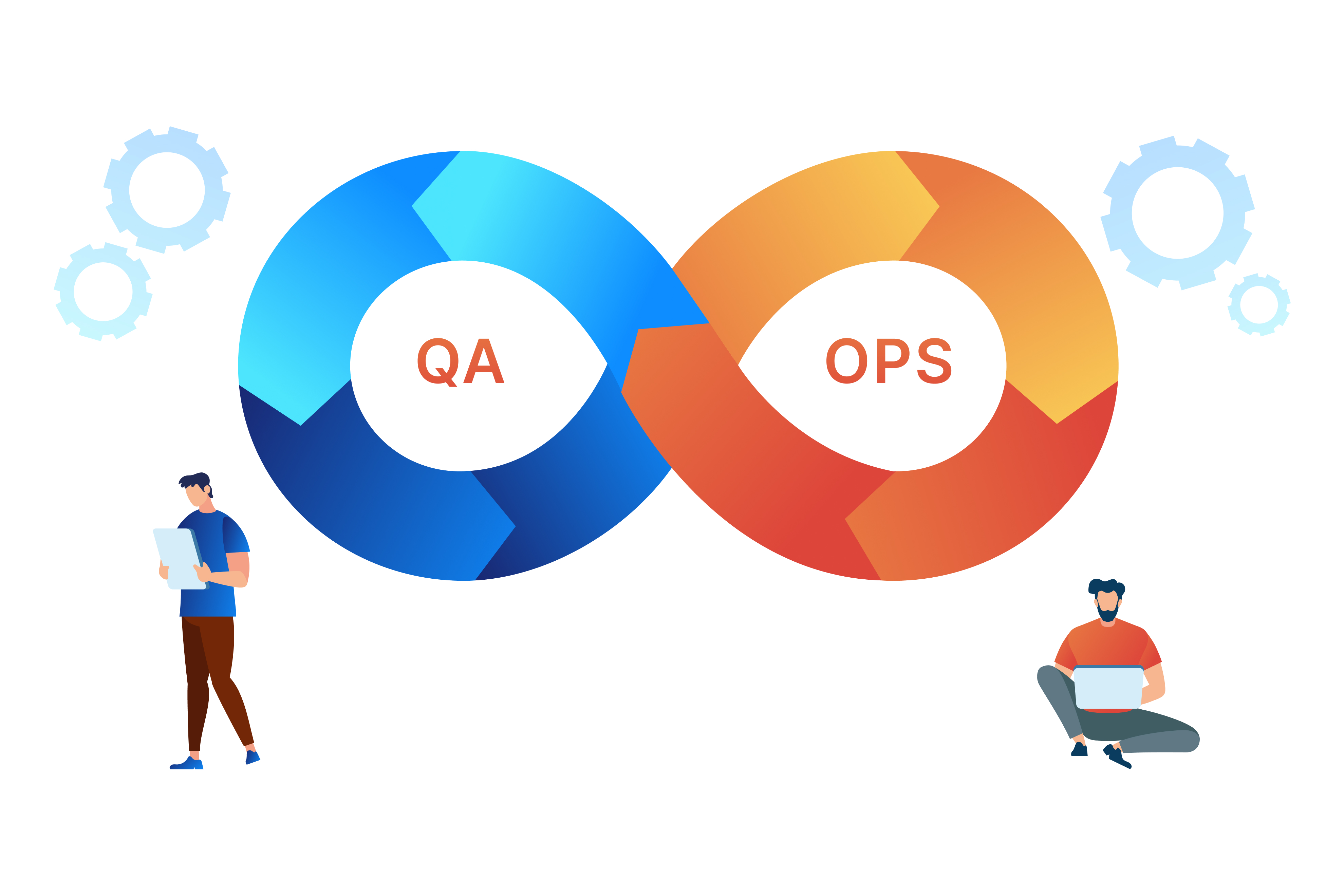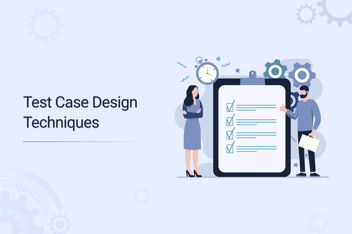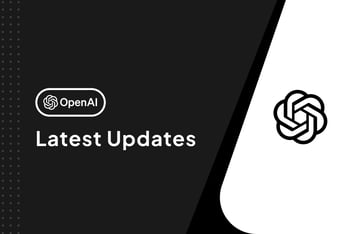QAOps is a new practice that integrates the QA team to work directly with the operations team and the development team to achieve superior product quality. QAOps processes guarantee faster delivery without compromising the software quality.
Introduction
Quality Assurance (QA) is a common practice to ensure that the end product of any software development process conforms to the overall and scope-agreed expectations. Quality assurance for software operations is referred to as QAOps. It is a software development approach where the QA team collaborates closely with the developers and the operations team and is a component of the Continuous Integration (CI)/Continuous Deployment (CD) process.This leads to better, quicker, and more robust software delivery without compromising the quality.
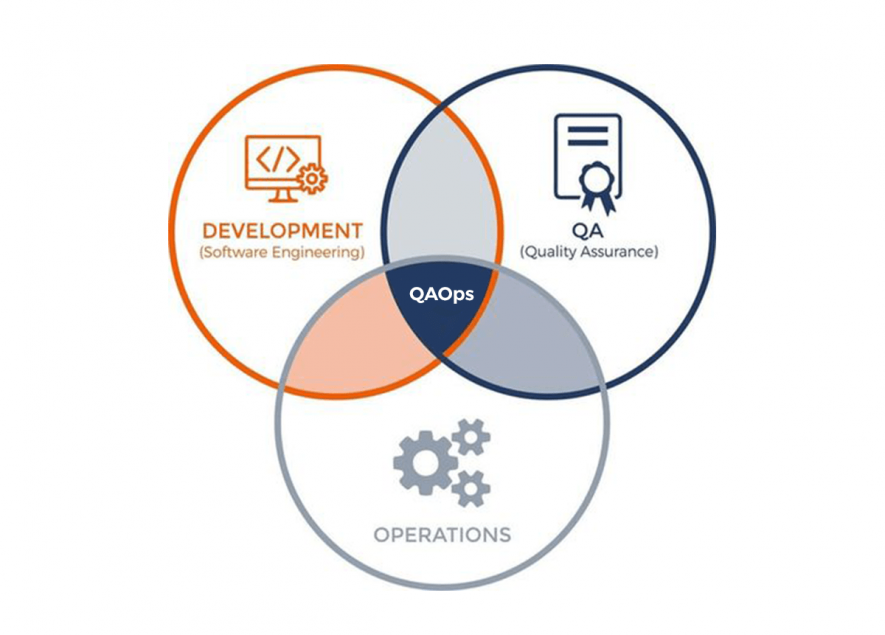
How can QAOps be implemented?
The QAOps framework integrates QA processes, automation, and QA reporting with the Software Development Lifecycle (SDLC) process. Since QAOps is all about creating a testing environment to evaluate the application's quality, it must be carried out properly. The entire process requires setting up different automation tools within the pipeline of the development life cycle (CI/CD) in order to ensure complete testing of code, data, and software configuration along with the new modifications.
Continuous integration and continuous delivery are two key components of any development process that are involved in building new software and making changes to it while maintaining the integrity of the final output. Developers frequently add features to modify the original product during the development process. To determine whether the program is still functional with the additional changes, it includes conducting a number of tests. Setting an accurate platform with well-known tools on the CI/CD pipeline is the main goal of QAOps, which is to make sure that the newly created code is thoroughly validated and tested.
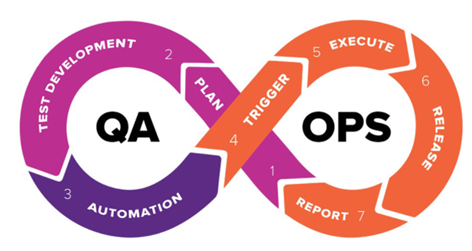
The following three phases make up QAOps, which heavily utilize the concept of continuous testing through the deployment of CI/CD pipelines.
- Trigger: The trigger phase involves developing appropriate test cases that are appropriate for evaluating the technical changes in the application without wasting time on writing test cases for unnecessary areas. The test cases are created in a way that they cover every aspect of software testing.
- Execute: During this phase, the parallel tests that were approved during the trigger phase are put to use. By carrying out the tests created in the preceding phase to assure the quality of the product, it is executed concurrently with the Trigger phase.
- Report: For the QAOps process to be effective, the reporting must be well carried out. An ideal report should offer both detailed information and a brief overview. Anyone looking at the reports will find this to be beneficial. In order for different stakeholders to compare the results, the reporting module should also be able to maintain the history of earlier runs of tests. Tools like Jira, Spira Test, and XRay that generate and create reports are very useful.
Testing methodologies used in QAOps
QAOps uses the following series of test methodologies to conduct testing during the whole process.
- Smoke testing: Smoke testing is performed to assess the product's stability. To pass the smoke test, the software's features must all function properly and the code must be error-free. Smoke testing is used by QAOps for verification testing.
- Automated testing: QA engineers can create automated testing code to test the program more quickly. QA engineers must study the product before building an automation framework to better understand its specifications, functionality, and goals. Following completion of this procedure, the codes are executed as part of the QAOps pipeline.
- Regression Testing: When a product is updated with a new feature or an existing feature is improved, regression testing enables the reliability of the product to be checked. QAOps evaluates if adding new features or changing the code maintains the software's quality.
- Parallel testing: Parallel testing enables the execution of numerous test codes for a product at once, cutting down on testing time. Through the use of parallel testing, QAOps instantly makes testing faster. It fits the CI/CD pipeline requirements perfectly. Due to its extensive data processing, parallel testing demands higher processing power and hardware capabilities to run many programs at once.
- Testing for scalability: It shows how the software will act in the long run when usage increases or decreases.The number of concurrent customer requests on the application can increase or decrease based on product usage at the given moment. So scalability testing helps you understand how your application behaves under different request loads.
Technologies and Tools for QAOps
- Automation Tools: Selenium WebDriver, Protractor, Katalon Studio, Tricentis Tosca, etc.
- Performance Testing Tools: JMeter, BlazeMeter, WebLoad, LoadRunner, Tricentis NeoLoad, etc.
- Mobile apps Automation Tools: Appium
- API Testing & Automation Tools: SoapUI, Postman, Runscope, Rest Assured(Java) and Requests(Python), etc.
- CI/CD Tools: Jenkins, CircleCI, AWS CodeBuild, Azure DevOps, Travis CI, etc
Conclusion
Finally, QAOps can also be viewed as continuous testing because it carries out testing concurrently with development, which, when done effectively, speeds up software delivery. Along with ensuring a quicker turnaround, QAOps also guarantees the product's quality. The framework combines the efforts of the IT Operations, Development, and Quality Assurance Teams to speed up product delivery. Software testing technologies like XRay, Rapise, JMeter, and Jenkins are currently available on the market and are very powerful and valuable tools that help to execute this framework.

